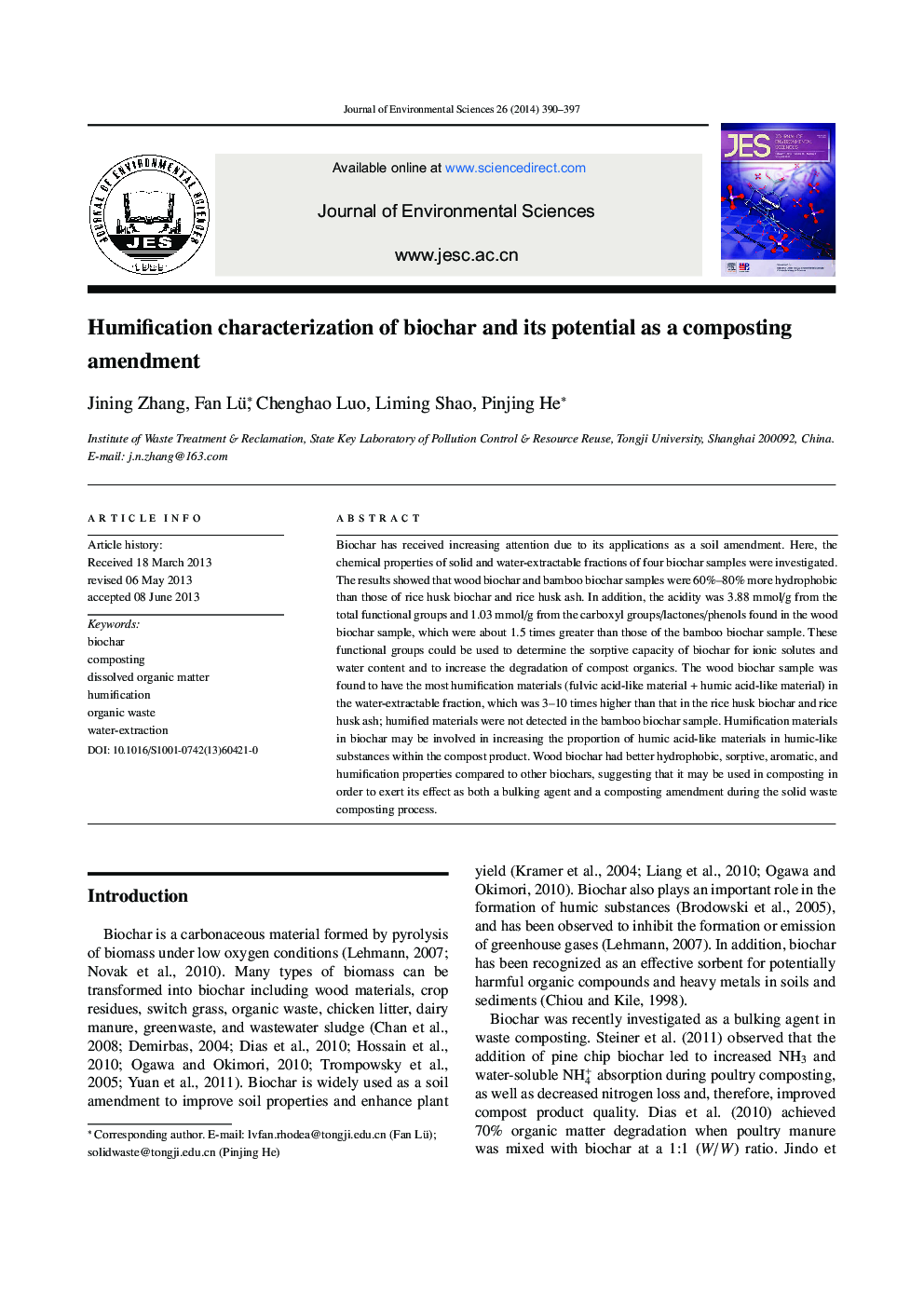| Article ID | Journal | Published Year | Pages | File Type |
|---|---|---|---|---|
| 4454658 | Journal of Environmental Sciences | 2014 | 8 Pages |
Biochar has received increasing attention due to its applications as a soil amendment. Here, the chemical properties of solid and water-extractable fractions of four biochar samples were investigated. The results showed that wood biochar and bamboo biochar samples were 60%–80% more hydrophobic than those of rice husk biochar and rice husk ash. In addition, the acidity was 3.88 mmol/g from the total functional groups and 1.03 mmol/g from the carboxyl groups/lactones/phenols found in the wood biochar sample, which were about 1.5 times greater than those of the bamboo biochar sample. These functional groups could be used to determine the sorptive capacity of biochar for ionic solutes and water content and to increase the degradation of compost organics. The wood biochar sample was found to have the most humification materials (fulvic acid-like material + humic acid-like material) in the water-extractable fraction, which was 3–10 times higher than that in the rice husk biochar and rice husk ash; humified materials were not detected in the bamboo biochar sample. Humification materials in biochar may be involved in increasing the proportion of humic acid-like materials in humic-like substances within the compost product. Wood biochar had better hydrophobic, sorptive, aromatic, and humification properties compared to other biochars, suggesting that it may be used in composting in order to exert its effect as both a bulking agent and a composting amendment during the solid waste composting process.
